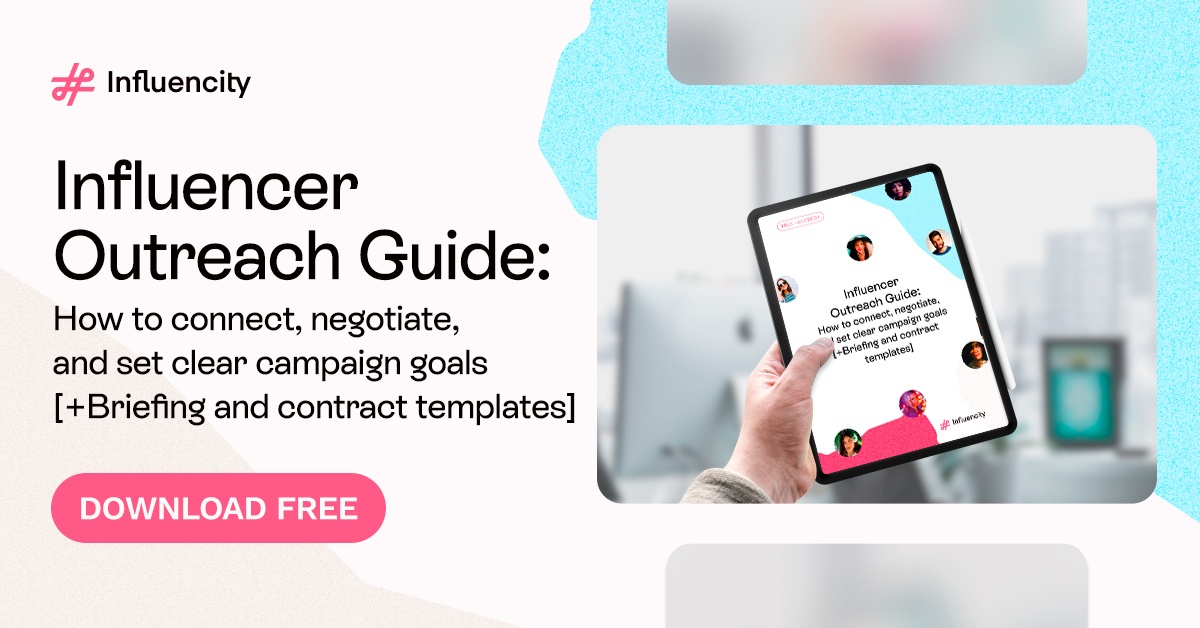Influencer Tracking Made Easy: Manual vs. Automated
Whether you are a brand or a marketing agency, influencer tracking is an essential element of running an influencer campaign. It helps you identify how well your influencers are performing, and which platforms and formats are generating the most engagement. Without this data, you have no idea how effective your campaigns are, which strategies are working best, and what impact your influencers are having on the bottom line of your business.
You can, of course, track all this information manually. However, this can be time-consuming and take up a lot of valuable resources. Instead, you can automate the influencer tracking process and free up more time to spend on strategizing and planning your next campaign.
With this in mind, let’s take a look at some of the differences between manual vs. automated influencer tracking to help you decide which method will help you take your brand to the next level.
What Is Influencer Tracking?
Influencer tracking is the process of monitoring the performance of an influencer that you have partnered with. The aim is to determine whether their performance meets your expectations and if they are generating the desired results with their campaigns.
Influencer tracking can be done in a number of ways, depending on the objectives of your campaigns and the KPIs you have chosen to track in order to measure progress towards your defined goals.
This might include tracking:
- Key metrics such as engagement, reach, views, and impressions (these metrics are included in an influencer’s private insights page which they will need to share with you)
- Affiliate links and promo codes
- Site traffic before, during, and after a campaign has been launched
- UTM tracker links to monitor individual influencer performance through sites like Google Analytics (UTM links can be used to track which platforms, influencers, and campaigns are diverting more traffic to a site, which content type is making a bigger impact if you are A/B testing, etc.)
- Sales conversions and leads
- Campaign ROI
All this data helps you identify the impact your influencer marketing campaigns are having on your brand and whether or not you need to adjust your strategies in order to boost your ROI.
How to Track Influencer Campaigns
There are a couple of methods you can use to track the performance of your influencers and your campaigns. You can track your data manually with spreadsheets, or you can use automated influencer tracking tools to streamline the process, pull the data you need, and generate faster results.
Let’s take a look at these two methods in a bit more detail to see which would work best for your business.
Manual Influencer Tracking
Manual influencer tracking is the most cost-effective solution but getting access to accurate real-time data can be time-consuming.
This method involves creating spreadsheets and tracking your emails to see who has purchased your products and where leads were initially generated. For this method to work, you have to be organized and make sure you keep your records updated at all times. It’s also best to create separate spreadsheets for each of your campaigns so that data is clearly recorded and easy for everyone in your team to access. Plus, you need to make sure your influencers get regular email updates so that they know how well their campaigns are doing and whether they need to make any adjustments to boost their performance.
All this obviously takes up a lot of time, which is why many companies choose to use automation tools to streamline the process. This makes it easier to access accurate data that is automatically updated each time someone interacts with your campaigns, accesses your website, or makes a purchase.
Automation Tools
Automation tools are a far more effective way of managing influencer tracking. Aside from speeding up and streamlining the processes, you also get much more insight into your campaigns, the influencers that you partner with, and the audiences that they reach. And this means that you can proactively provide your influencers with the assets, insights, and reporting transparency they need in order to optimize the engagement on their posts and boost the ROI of your influencer campaigns.
With Influencity, for example, all public data from influencer posts is pulled from their profile and automatically compiled into one easy-to-read dashboard. This dashboard can then be adjusted, to show exactly the information you’re interested in seeing, and shared with colleagues and clients to show your progress.
The Benefits of Using Automation Tools for Influencer Tracking
Let’s finish by recapping some of the benefits of using influencer tracking automation tools to track the performance of your influencers and the campaigns they promote.
Automation tools for influencer tracking can help you:
- Monitor your KPIs in real-time and make data-driven decisions.
- Save valuable time and resources compared to manual tracking which you can instead spend on more strategic tasks for the good of your business.
- Automate repetitive tasks and improve team productivity.
- Identify sales attribution and where your revenue is coming from. This is important because the more reliable your data is, the easier it will be to attribute your sales to the right campaigns and establish what works well, and what doesn’t.
- Gain detailed insights into your influencer campaigns, helping you identify which channels, formats, and strategies work best.
- Determine whether an influencer is performing as expected and generating results for your business.
- Understand & grow your ROI.
Ultimately, using influencer tracking automation tools helps you understand how well your campaigns are performing, which strategies are working best, and whether you or your influencers need to make any adjustments to active campaign posts. That way, you can identify which investments are paying off so that you can reach your campaign objectives more efficiently and effectively.
Tags:






















%20and%20How%20Can%20They%20Benefit%20Your%20Brand%20article.jpg?length=628&name=What%20Are%20Key%20Opinion%20Leaders%20(KOL)%20and%20How%20Can%20They%20Benefit%20Your%20Brand%20article.jpg)








